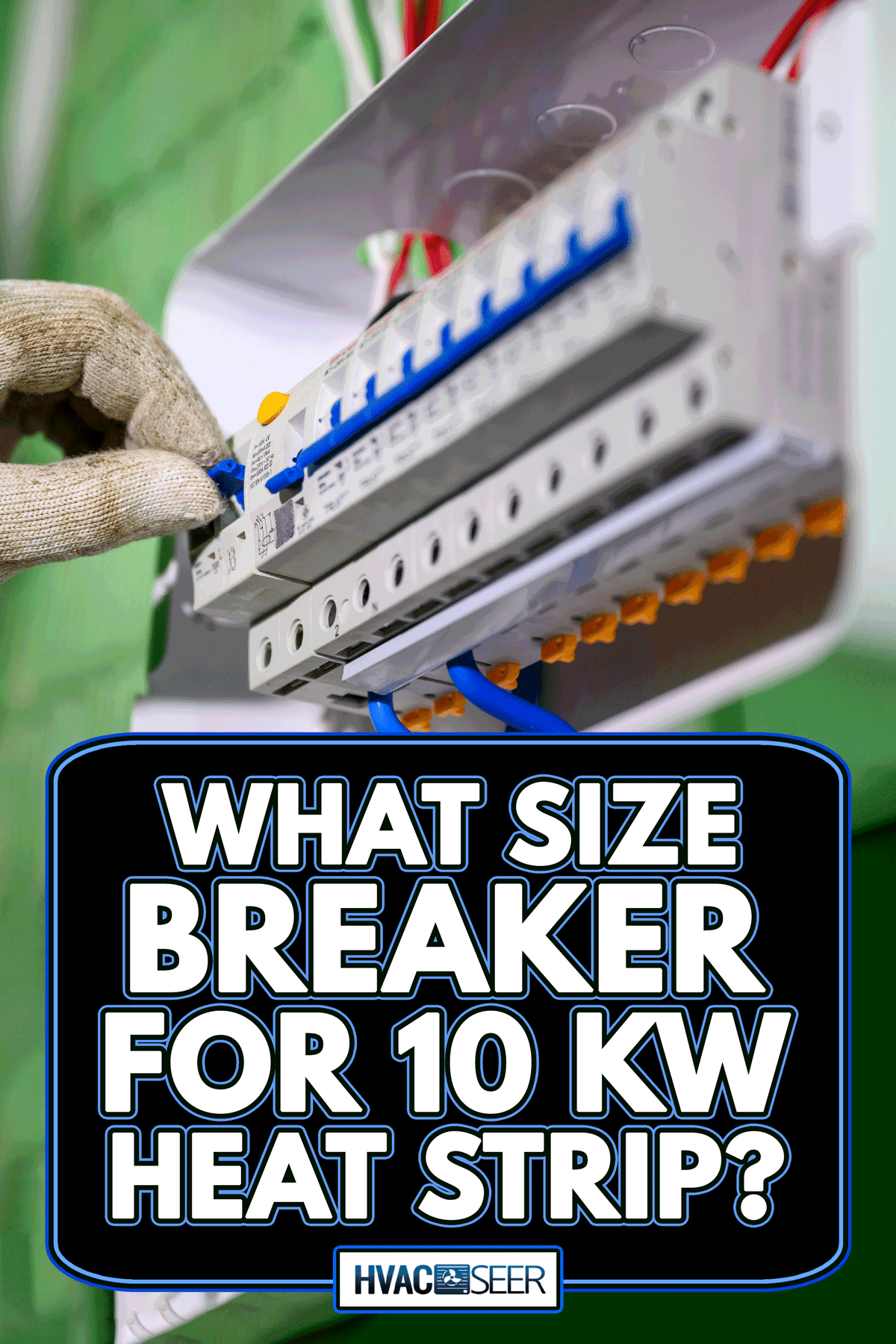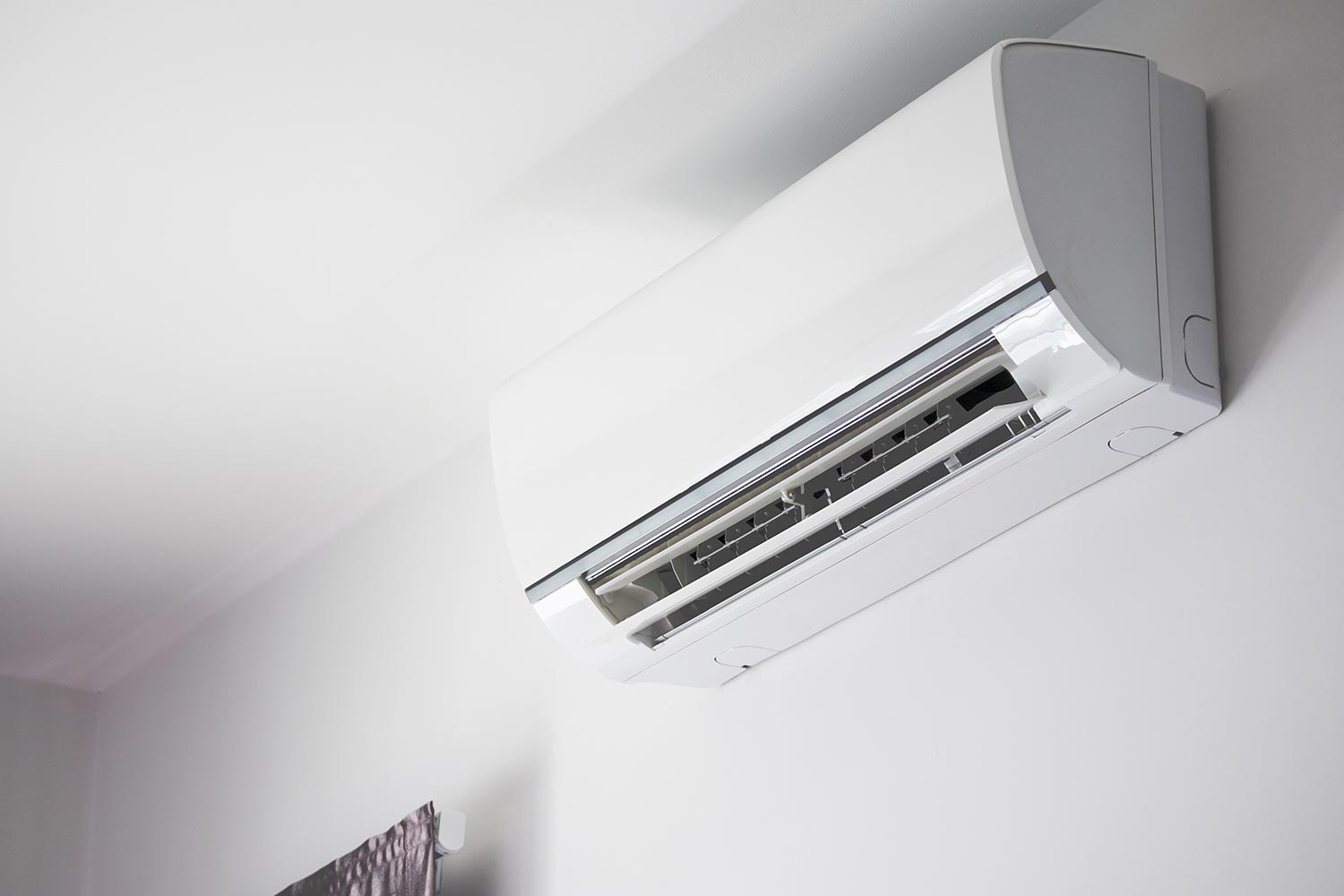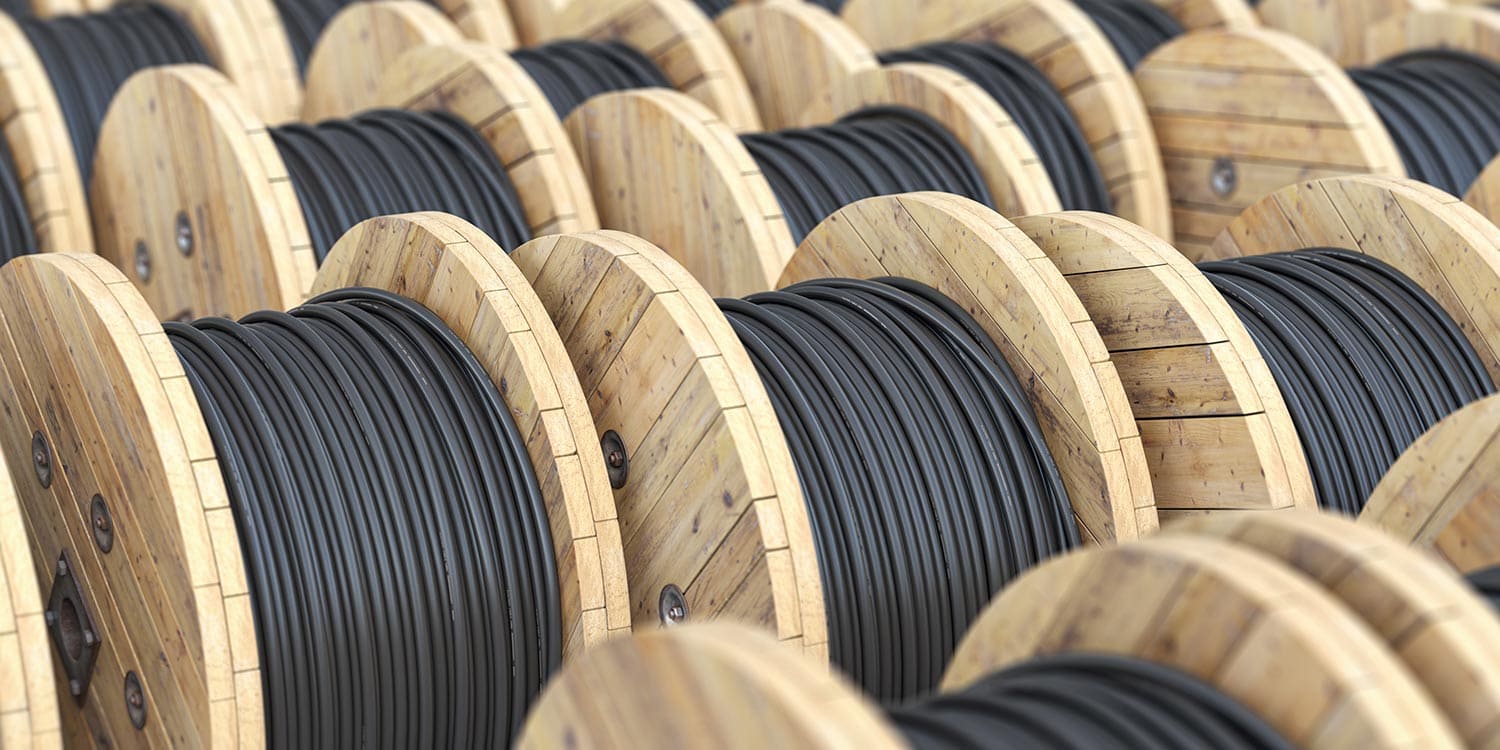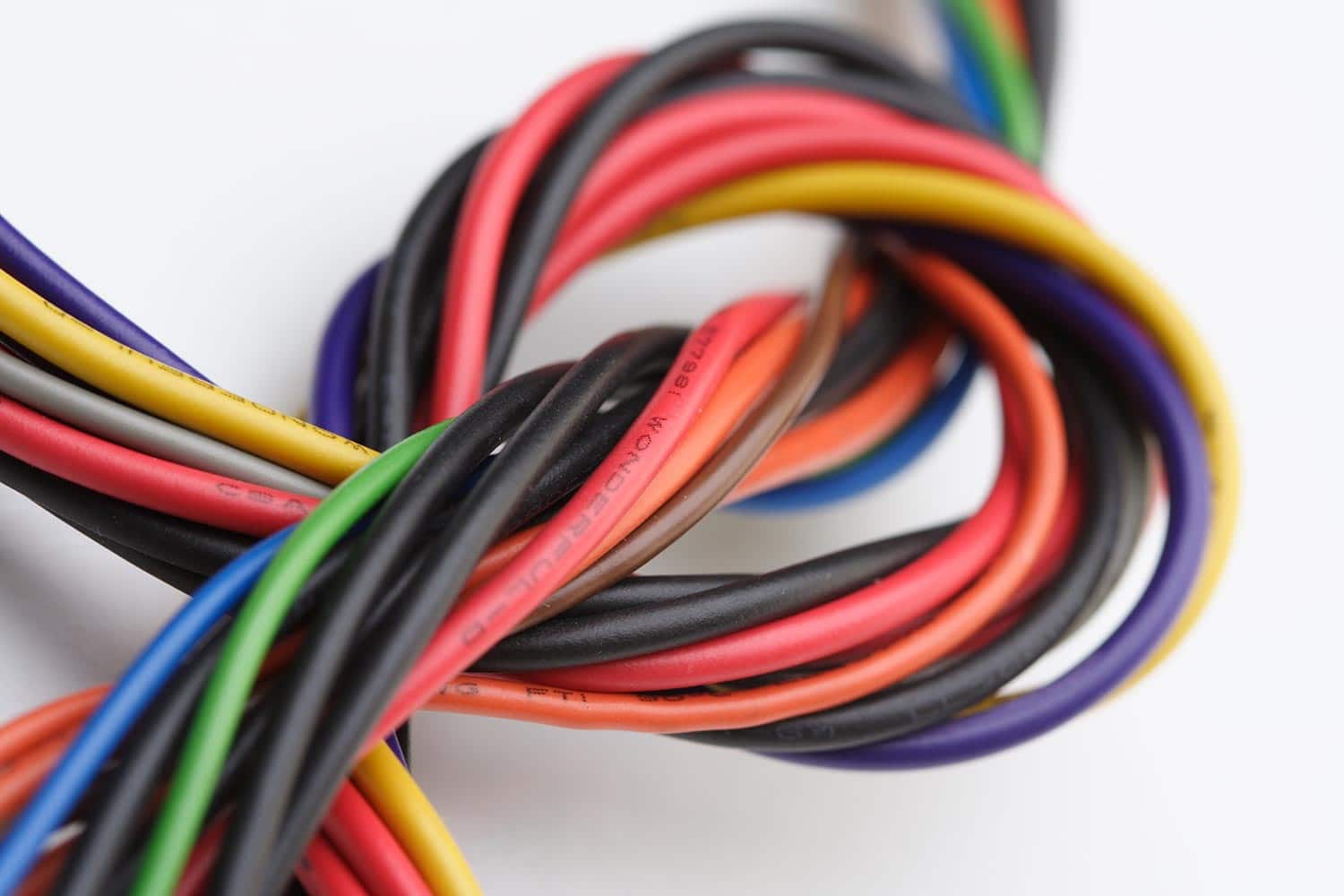An HVAC installation entails more than simply the machine itself. Ensure your breaker is capable of handling the electrical load of the unit. But, for a 10 kW heat strip, what is the breaker size it needs? This is what we uncovered after researching this question for you.
Generally, the breaker size for a 10 kW heat strip is around 42-60 amps. However, the ampacity advised by the manufacturer will eventually determine the breaker size.
In addition, you should refer to your local electrical code guidelines for further information.
When determining the right size breaker you want, it is always best to double-check the producer's recommendation. In this article, we'll talk about how many amps you need for your AC. We'll also explain how to compute the circuit breaker size. So keep on reading!

How To Calculate Circuit Breaker Size
If you choose a circuit breaker that is too short, the breaker will trip whenever it requires energy.
To calculate the breaker size correctly, look for the wattage on the specification label of your air conditioner. Take a note of the highest power consumption.
You can also check the manual's voltage requirements or the specification label.
If you overlook a voltage requirement, inspect the plug on the air conditioner. Remember that it needs 120v of power if it has a conventional household plug with three straight prongs.
Divide the wattage you've noted by the number of voltages from the plug, which is 120v. The result will indicate how many amperes your circuit breaker can resist.

How Many Amps Do I Need For A 10,000 BTU Window AC?
The amperage of units rated at 10,000 BTU can range from 7.25 to 10.87. Window air conditioners with a BTU value of 12000 will use between 8.70 and 13.02 amps.
In contrast, those with a BTU value of 18000 and potentially more will use between 13.04 and 19.57 amps. The number of amps an air conditioner generates increases as the BTU rating increases.
How Many Volts Do I Need For A 15,000 BTU AC?
The most common voltage ratings for AC units are 115, 125, and 220 volts, with amperage rates ranging from 15 to 20 amps.
Smaller units typically use the lower two voltage classifications, whereas ones rated over 15,000 BTUs demand a 220-volt circuit rate.

How Many Amps Does A 2 Ton Mini Split AC Need?
A 2-ton mini-split needs a standard load of 25 amps heat pump, often known as a 24000 BTU unit, which varies in size. Heat pumps voltage requirements for this size are 220 volts and.
You'll surely want to check the nameplate or label data attached on the side portion of the outdoor unit. This data is your guide to ensure it provides and serves Maximum Overcurrent Protection (MOP).
What Size Breaker Do I Need For A 240V Baseboard Heater?
Baseboard heating can serve all of a home's heat requirements, particularly when cold air blows inside through your window. However, it's more common to use it to boost the heat in areas where your central HVAC system is inadequate.
To utilize your heater efficiently, you'll need a 120v or 240v circuit to sufficiently power your electric baseboard heaters. The 240-volt heaters are much more power-efficient than 120-volt heaters and require less amperage.
When installing a 240v baseboard heater, you'll want it to run with a 20 or 30 amps double-pole circuit breaker.
Check out this 240v Breaker on Amazon.
Can I Use 10 Gauge Wire On A 40 Amp Breaker?
In electrical projects, having a basic understanding of wire gauges and amperage are essential. However, this does pose not only a threat to the entire project but also to your safety as well.
You can't handle a 40 amps breaker with ten gauge wire, and each wire gauge has an ideal ampere. The wire sizes must be larger as the circuit ampacity rating becomes higher.
Furthermore, you can use an eight gauge wire for a 40 amps breaker, and 30 amps are suitable for a ten gauge wire.
WARNING: Do not try to do this if you don't have enough knowledge and experience to ensure your safety!

Factors To Consider When Choosing A Wire
Always pick a wire gauge suitable for the amount of power and length of wire run to ensure optimum performance.

Using an improper wire is extremely dangerous, especially to equipment like stoves, air conditioners, water heaters, and electric dryer units.
This unit has a rated specified load that may compromise its overall performance if not correctly applied. Even so, learning some factors when choosing the correct wire size is essential.
Wire Length
This is how you intend to run your wire and the length of the wire. If you plan to run the optimum wire size above 100 feet, the rule of thumb is higher than this of over one size.
Moreover, if you're going to extend 8-gauge wire over 100 feet for a 40-amp breaker, you should use 6-gauge wire instead.
Using the next biggest wire size is good because the longer the voltage travels, the more amps it will reduce.
Bends
Bend your wire for 90-degree or 45-degree bends to avoid damaging the wires during installation. Doing so will extend the life of your wires while also reducing the fire risk.

Thickness Of Insulation
The insulation density can determine how much weight a certain gauge of wire can carry. Moreover, thick insulation necessitates larger diameter conductors, but thinner insulation lets tiny conductors have higher power loads.
Properties Of Wires
Your wire material will influence the wire gauge selection. Copper is a common material of wires for domestic wiring and is safe, efficient, and cost-effective.
The size of wire required to transmit the appropriate current load without overheating depends on the properties of the wire.
Types Of Wires
Cables With Rubber Insulation
Rubber has long been recognized as a cable insulation system and sheathing material. It was known long before PVC and PE became widely available.
This type of wire is widely popular in both household and industrial settings.
Bare Copper Wire
A copper wire with no added cover coat is solid copper and can be used in-ground conductors, hook-up wiring, and jumper cables as a single wire.
What's more, the color of bare copper is orangey-red and tinned—resulting in the copper providing higher corrosion resistance and high-thermal resistance than bare copper.
Wire In Panel Box
The grounding wire has a larger copper wire that hooks the main grounding connector into the panel.
Typically lug on into the end of the grounding bus bar, or the metal rod is buried beneath deep the surface.
What Happens If You Use The Wrong Wire Size?
If you choose the wrong wire size, your equipment will have to work harder and draw a heavy load of amps from the power system.
Furthermore, if you let this issue continue, it may damage your entire equipment or, worst, your house.
Most likely, you'll deal with this potential problem below if you use the wrong wire size for your project.
Poor Performance
When you choose a wire size that is too tiny for the workload, performance will suffer. Using a wire that is too thin for its purpose would overheat and fail to deliver enough power to your equipment.
The result could be an overload of specific circuit components or a power loss, leading to a fire or other significant issues.
Extremely Fire Vulnerable
You risk starting a fire. If you plug a piece of high-amp equipment into a 15-amp circuit, the wire may melt due to overheating from carrying too much energy and causing a fire.
Electrical Shortage
Electrical service may be disrupted due to voltage drops in overloaded lines caused by the usage of too thin wires to carry the current load. This can result in issues like blinking lights or a power loss.
To Wrap Things Up
Complying with the right size requirement for your breaker will determine your house's safety and efficiency. Throughout this topic, we share how to calculate your breaker size.
We've also explained how many amps you need for your AC to run smoothly. You've also learned various types of wires and what will happen if you use an improper one.
Use this knowledge to your advantage and ensure the safety of your house and equipment to operate safely and efficiently.
Made it this far? Check out these helpful related posts!

